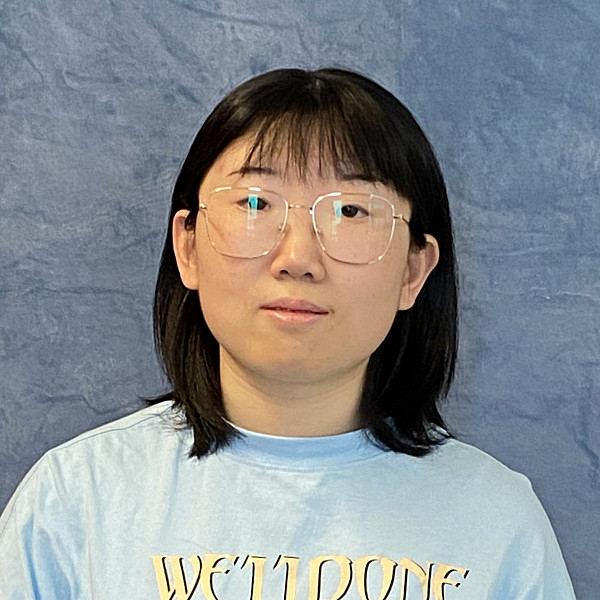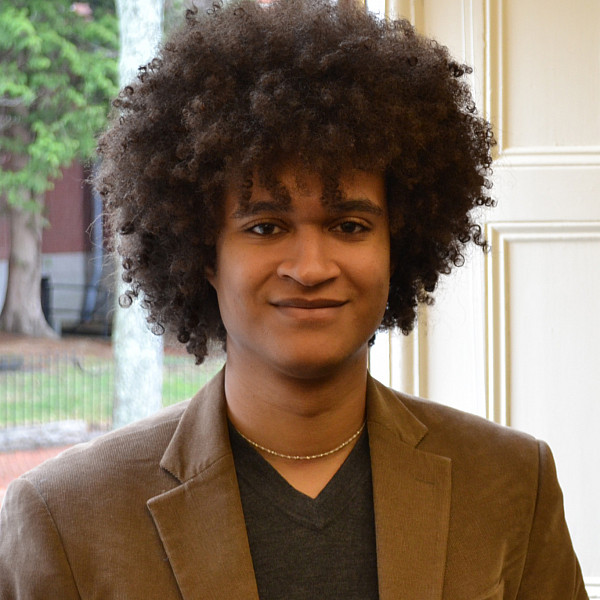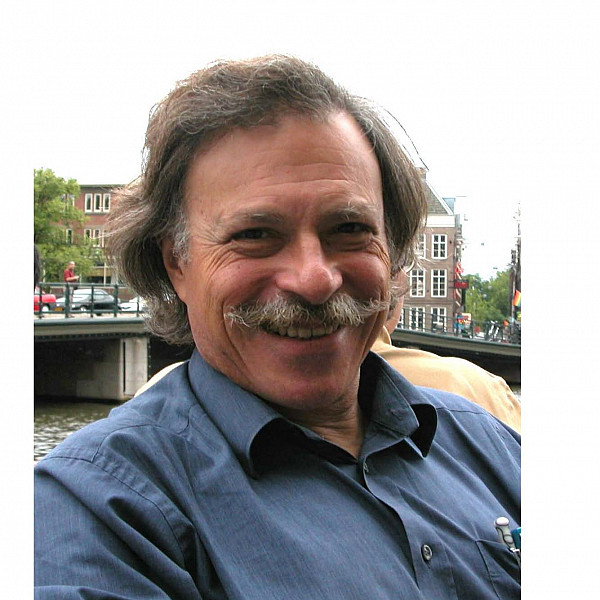Investigation on Magnetic Properties in Novel Quantum Materials through Neutron and X-ray Scattering
Advisor: Kemp Plumb
Abstract: Magnetic materials with a high degree of frustration, whether arising from lattice geometry or competing anisotropic interactions, can host exotic ground states such as quantum spin liquids, while additional exchange terms and small perturbations often stabilize long-range magnetic order. Investigating these ordered phases in spin-liquid candidate materials through determining their magnetic structures, studying their collective excitations, and exploring local degrees of freedom, provides crucial insights into frustrated magnetism. In this thesis, I discuss a series of neutron and x-ray scattering experiments on novel quantum materials to investigate their magnetic properties and spin and orbital dynamics to deepen our understanding of emergent phenomena driven by frustration.
The Brown Theoretical Physics Center IDEA Seminar Series presents Cristiano Germani, Universitat de Barcelona
The Brown Theoretical Physics Center IDEA Seminar Series presents Cristiano Germani, Universitat de Barcelona, on Wednesday April 16th at 12pm in Barus 212.
Title: The unexpected shape of the primordial black hole mass function
Abstract: After introducing the nonlinear statistics for the primordial black holes’ abundance, I will show that the primordial black holes mass function necessarily peaks at the largest wavelength of the power spectrum of curvature perturbations.
The Brown Center for the Fundamental Physics of the Universe Seminar Series presents Rachel Hyneman, University of Arizona
The Brown Center for the Fundamental Physics of the Universe Seminar Series presents Rachel Hyneman, University of Arizona, on Wednesday April 16th at 1:00pm in Barus & Holley Room 190.
Title:
Probing Higgs Boson Self-Interactions at the ATLAS Experiment
Abstract:
As the most recently discovered fundamental particle, the Higgs Boson offers many promising avenues towards further understanding our universe. One special avenue of study is in measuring the Higgs Boson’s interactions with itself, which have significant implications for both the microscopic and macroscopic nature of the universe we inhabit. In this talk, I will discuss how we study the Higgs self-interaction through measurements of the production of pairs of Higgs Bosons at the ATLAS experiment at the Large Hadron Collider. I’ll focus on how we can use machine learning to measure the “impossible” final state in which both Higgs bosons decay to two b-quarks. I’ll then discuss prospects for improving future Higgs Boson self-interaction studies in ATLAS.
Emergent Phenomena in Multilayer Graphene with Planar and Vertical Architectures
Advisor: Leo Li
Abstract: We explore the interplay of symmetry, electronic correlations, and emergent quantum phenomena in low-dimensional electronics, focusing on twisted trilayer graphene (TTG), Bernal bilayer graphene (BBG), and quantum Hall bilayer systems.
Using angle-resolved transport enabled by the planar sunflower geometry, we investigate anisotropic behaviors in TTG, revealing the relationship between nematicity, superconductivity, and strange metallicity in moir'e flat bands. We also examine non-reciprocal transport driven by spontaneously broken inversion symmetry. These effects exhibit distinct odd-fold angular dependence tied to the rotational symmetry of the underlying band structure. Our studies show how symmetry-breaking orders emerge and evolve in the low-temperature phase space, underscoring the crucial role of correlation in novel quantum phases.
Advancing the study of nonlinear transport, we establish a general theoretical and experimental framework for extracting conductivity tensors to second order in current. We showcase our methodology in a BBG sample with the sunflower design, demonstrating an unambiguous identification of nonlinear Hall conductivity and its evolution across the phase space, highlighting previously unexplored avenues for harnessing correlated electronic states.
Shifting focus to vertically structured systems, we next explore excitons in the fractional quantum Hall effect in a graphen/hBN quantum Hall bilayer sample. In the interlayer-coupled two component fractional quantum Hall regime, we observe two types of fractional excitons: one as a fractional analogue of the exciton condensate at total filling of one, and another involving fractionally charged constituents, obeying bosonic, fermionic, or anyonic statistics. In the decoupled limit, we showcase the identification and control of anyonic excitons in the Jain sequence via thermal excitation and electrostatic doping. Showcasing the rich landscape of this platform, we also demonstrate pseudospin-induced transitions and observe excitonic neutral modes at even-denominator states.
Leveraging versatility of van der Waals heterostructures, we explore many-body, collective phenomena using both planar and vertical device architectures. Together, our findings offer key insights into correlated quantum phases in low-dimensional systems.
Novel Pathways for Probing Correlation-Driven Electronic Order in Multilayer Graphene
Advisor: Leo Li
The Pat & Tony Houghton Condensed Matter Seminar Series Presents Aditya Sood, Princeton Univ.
The Physics Department is pleased to present the Pat & Tony Houghton Condensed Matter Seminar Series featuring Aditya Sood, Princeton University on Thurs., April 17 at 4 PM in BH190.
Title: “Lights, Cameras, Action! Visualizing Atomic-scale Dynamics on Ultrafast Timescales.”
Abstract: Advances in energy and computing require a detailed understanding of the effects of external perturbations on atomic-scale dynamics down to picometer lengthscales and picosecond timescales. These dynamics can either be coherent and directed, or incoherent and random – encoding a range of physical processes ranging from field-induced phase transformations to light-driven non- equilibrium thermal fluctuations. Capturing these dynamics on ultrafast timescales is essential for understanding the fundamental limits of electronic switching and charge/thermal transport in next- generation devices.
In this talk, I will describe my group’s efforts to visualize ultrafast atomic-scale dynamics triggered
by short pulses of light and voltage, leading to the discovery of transient non-equilibrium phases and unusual regimes of energy transport at the nanoscale. In the first part, I will introduce new types of ‘ultrafast cameras’ we are developing which enable measurements of electric-field-induced structural changes on nanosecond timescales within operating devices. These tools allow us to directly observe electrically triggered non-equilibrium phases and complex multi-step switching pathways in Mott insulators and ferroelectrics, offering new insights into the design of energy-efficiency electronics1.
In the second part, I will describe our efforts to understand the fundamental limits of energy transport in nanomaterials. Using van der Waals 2D materials as model systems, we uncover new phenomena including quasi-ballistic phonon transport in thin films2 and highly efficient energy exchange in type-II heterojunctions3. By directly tracking lattice temperatures in atomic monolayers with picosecond resolution, we find that femtosecond optical excitation can drive large (>100x) enhancements in heat transfer rates due to charge transport via interlayer-hybridized states.
Together, our findings highlight the power of dynamic excitation as a tool for “on-demand” programming of material behaviors.
(1) Sood et , Science 373, 352 (2021)
(2) Sood et , NanoLetters 19, 2434 (2019)
(3) Sood et , NatureNanotechnology 18, 29 (2023)
Swimming Kinematics of Enterobacter sp. SM3
Advisor: Jay Tang
Abstract: Enterobacter sp. SM3, is a recently-isolated species of gut bacteria that proficiently spreads over nutritional substrates—-a motility pattern called swarming. The connection between the motility of individual bacteria and the higher-order organization observed at the level of a swarm is not well understood and is a function of both biological and physical factors. In this defense, I will characterize and describe the motility of SM3 in liquid media, drawing physical insights from my findings.
I imaged SM3, grown both as individuals and as swarmers, with two-dimensional optical microscopy. Using tracking algorithms, I extracted motility parameters including the average speed, turning time, run time, and turning angle. I found that there were distinct differences in these parameters between swimmers and swarmers—with swarmers turning less often and for smaller angles, resulting in smoother trajectories. Using a mechanical model, my results show that the main difference in motility can be physically attributed to the longer length of swarmers.
Taking advantage of the variable length of swarmers, I imaged swarmers of different length swimming in close proximity to a surface and studied their behavior. Generally, bacteria near surfaces swim in circular trajectories due to the counter rotation of their cell body and flagellar bundle, which hydrodynamically couple with the surface. I found that swarmers of longer length traced circular trajectories that were larger in radius than shorter ones. We modeled swimming bacteria as two counter rotating spheres separated by a distance and connected by a spring. The results of the simulation showed that the dependency of radius on cell length can be explained by the torque-dipole component of the fluid flow for our model swimmer.
Finally, I imaged swimming SM3 with three-dimensional digital holographic microscopy. In nature, bacteria inhabit complex, three-dimensional environments, making 3D imaging and tracking essential tools for understanding their motility. Furthermore, 3D imaging has distinct advantages over 2D imaging, such as high-throughput, minimal surface interactions, and more robust statistics. I found that the motility parameters in 3D are similar to those in 2D, but the results are more reliable and less affected by the boundary effects of a nearby solid surface.
The Physics Department is pleased to present a colloquium featuring Paul Chaikin, New York University, on Monday, April 21, 2025, at 4:00 PM in BH168.
Title & Abstract: TBD
Aspects of Cosmological, Celestial and String Amplitudes
Advisor: Anastasia Volovich
Abstract: In this thesis, we present novel perspectives on the explicit evaluation and analytic structure of correlation functions and scattering amplitudes in flat and expanding spacetimes. Specifically, we analyze wavefunction coefficients in a toy model theory of conformally coupled scalars within power-law FRW cosmologies, examine unitarity constraints on dual resonant string amplitudes, and further our understanding of the flat-space |mathcal-matrix using the framework of celestial amplitudes.
First, we explore intriguing connections between positive geometries, on-shell methods, and bootstrap principles studied within the modern scattering amplitudes program to the Bunch-Davies wavefunction in toy models of FRW cosmologies. Leveraging recent advances in twisted cohomology and generalized unitarity from the Feynman integral literature, we develop an algorithm to construct a physical basis that simplifies the computation of differential equations for all tree and loop-level wavefunction contributions. Furthermore, we unravel the existence of hidden zeros in the cosmological wavefunction and demonstrate a universal factorization behavior associated with the kinematics of near-zero configurations for all tree and loop graphs.
Second, we investigate the constraints of partial wave unitarity on dual resonant amplitudes from the viewpoint of the modern |mathcal-matrix bootstrap. Focusing on the Coon amplitude – a one-parameter deformation of the Veneziano amplitude with logarithmic Regge trajectories – we establish manifest positivity on certain Regge trajectories while identifying regions of unitarity violation in parameter space using tools from $q$-calculus and numerical methods.
Finally, we make substantial advances in the study of celestial amplitudes by investigating the dual celestial conformal field theory (CCFT) and the role of light-ray operators, which are increasingly recognized as fundamental components of the CCFT spectrum. We present new computations of tree-level correlation functions for these operators, demonstrating their appearance in the operator product expansion of gluon primaries. Additionally, we examine the treatment of distributional low-point correlators by introducing a background that breaks bulk translation invariance, yielding correlators that more closely resemble those found in traditional two-dimensional CFTs.









